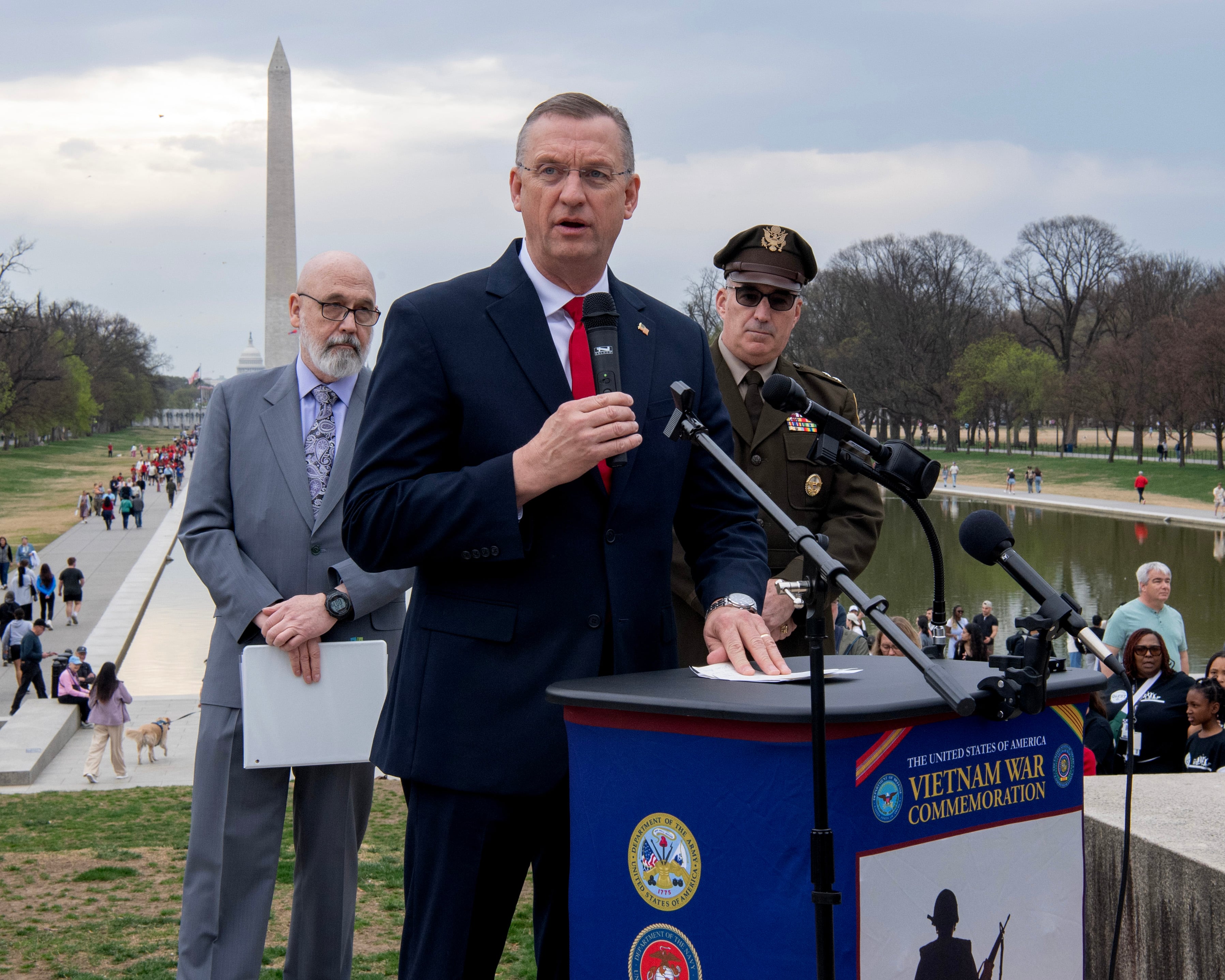Break out 8,085 slices of cake.
The Space Force is celebrating its third birthday Tuesday — the anniversary of its founding on Dec. 20, 2019, when federal law created the service to better manage the military satellites, radars and other space-related assets that contribute to national defense.
The Space Force is a subsidiary of the Department of the Air Force, tasked with organizing, training and equipping troops around the world. Its missions include enabling military communications, providing the world with GPS coverage, tracking missile launches, monitoring space weather that could disrupt electric grids on Earth, and more.
In its first three years, the service has grown to encompass more than 8,000 uniformed members, or “guardians,” plus several thousand civilian employees. That’s about one-tenth the size of the Marine Corps, the next-largest branch of the armed forces.
It hopes to wield a $24.5 billion budget in fiscal 2023, an increase of more than $7 billion over last year. The plus-up would fund the transfer of people and other resources from other services into the Space Force, as well as programmatic growth.
In many aspects, the Space Force is starting to move past the initial startup phase. Recently installed Chief of Space Operations Gen. B. Chance Saltzman and other Space Force officials are now focused on building up the service as a bigger, better-trained version of the former Air Force Space Command, which managed the bulk of military space operations in decades past.
Military space operations have taken on new importance in the past year. Ten months into Russia’s war on Ukraine, the U.S. and Ukrainian militaries as well as NATO forces have depended on the Space Force for key surveillance, targeting and communications capabilities in Europe.
Advances in hypersonic weapons development have also highlighted the need for new ways to track threats from — and in — orbit. And guardians are learning more about the vital intersection of space operations and cybersecurity every day.
Still ahead are the broad rollout of new uniforms; expanding Space Force command staff around the world; and decisions on the fate of a Space National Guard, to name a few items on the to-do list for standing up a military service.
Other perennial concerns, such as the prospect of conflict with Russia or China, or hurdles to closer allied cooperation, remain as well.
“We may be young, but our capabilities are mature beyond our years,” Saltzman said on Twitter. “[Chief Master Sergeant of the Space Force Roger Towberman] and I want to thank our [guardians] and their families for all they do each and every day in service to our nation!”
Rachel Cohen is the editor of Air Force Times. She joined the publication as its senior reporter in March 2021. Her work has appeared in the Washington Post, the Frederick News-Post (Md.), Air and Space Forces Magazine, Inside Defense, Inside Health Policy and elsewhere.



